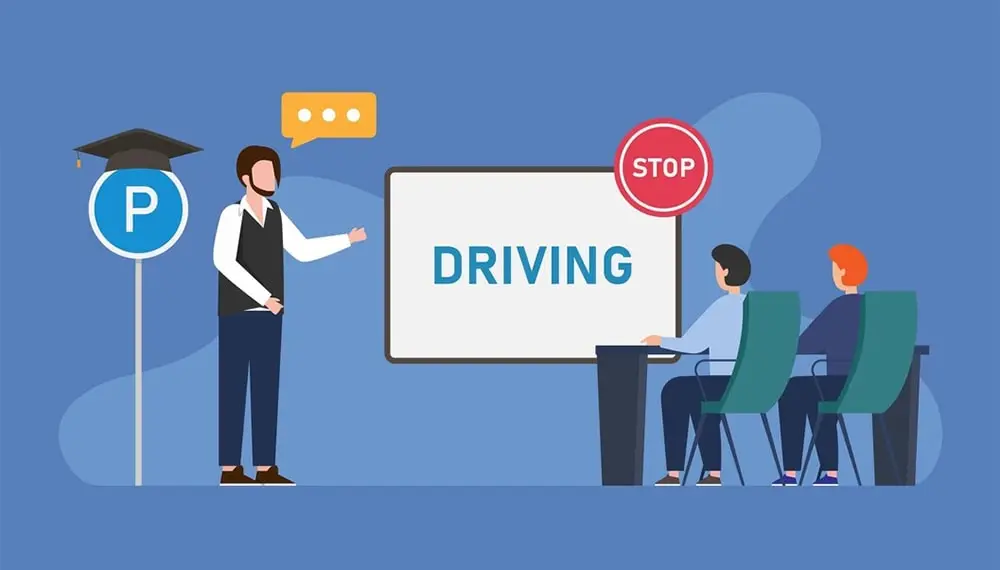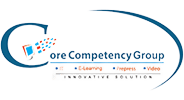Improving Workplace Communication For Organizational Success
Rohit Kumar
10 Jun, 2024

Effective communication forms the bedrock of any vibrant organization. Ensuring that teams collaborate efficiently and work towards common goals is crucial. Clear and open communication nourishes an upbeat work environment and builds employee trust.
Good communication practices are essential for reducing misunderstandings and conflicts. They help in creating a cohesive team where everyone feels valued and heard. Employees who communicate well are more engaged and productive, contributing to the organization's overall success.
The shift towards remote and hybrid work models has made effective communication even more critical. Communication can be challenging when teams are dispersed across different locations. However, addressing these challenges head-on can significantly improve team dynamics and performance.
This article outlines practical strategies to improve workplace communication. These strategies will help build stronger relationships, increase efficiency, and foster a culture of open dialogue. By implementing these approaches, organizations can ensure that their teams are well-coordinated and motivated to achieve their objectives.
Understanding Work Communication
Organizational communication refers to information and ideas exchanged within a company. Interactions can take many forms, including verbal, written, and non-verbal. Collaborating and achieving business goals require effective communication in the workplace.
Several types of communication occur in a workplace setting:
-
Verbal Communication: This includes face-to-face meetings, phone calls, and video conferencing. It allows for immediate feedback and helps in building personal connections.
-
Written Communication: Emails, reports, and instant messaging fall into this category. Written communication is crucial for maintaining records and ensuring clarity in instructions.
-
Non-Verbal Communication: Our bodies, voices, and facial expressions partially communicate messages. They often enrich and contextualize interactions.
-
Digital Communication: Using project management tools, collaboration platforms, and social media for workplace interactions. These tools facilitate real-time and asynchronous communication, especially in remote and hybrid work environments.
Understanding the different types of workplace communication helps choose the proper method for conveying messages. It ensures that information is shared effectively and efficiently, reducing the risk of misunderstandings.
Effective communication in the workplace goes beyond exchanging information. It requires active listening, understanding nonverbal cues, and being mindful of the emotional and cultural context of the conversation. By mastering these skills, employees can communicate more clearly and build stronger working relationships.
It takes time and effort to develop good communication habits. Individuals and teams must practice and commit to improving their interactions regularly. Investing in effective workplace communication can help organizations create a more cohesive work environment.
Benefits of Effective Communication
Communicating effectively is crucial to creating a harmonious and productive work environment. It drives the success of an organization and employee satisfaction. Organizations that foster effective communication benefit from the following benefits.
Enhanced Employee Engagement and Satisfaction
-
Building Trust: Open communication helps build trust between employees and management, fostering a positive work atmosphere
-
Sense of Belonging: Engagement and commitment are more likely to occur when employees feel valued and heard
-
Motivation: Clear communication about goals and expectations can motivate employees to perform at their best
Increased Productivity
-
Clarity in Tasks: Clear instructions and feedback ensure employees understand their responsibilities, reducing errors and increasing efficiency
-
Efficient Collaboration: Effective communication facilitates teamwork, making it easier for teams to collaborate and achieve common goals
-
Problem-Solving: Open dialogue helps identify and address issues promptly, preventing minor problems from escalating
Reduced Conflicts
-
Misunderstanding Prevention: Clear communication reduces the likelihood of misunderstandings leading to conflicts
-
Positive Work Environment: A harmonious workplace requires an open and honest communication culture
-
Conflict Resolution: When conflicts arise, effective communication skills help resolve them quickly and amicably
Stronger Relationships
-
Team Bonding: Regular and open communication helps build stronger relationships among team members
-
Employee Loyalty: Employees who feel connected and valued will stay with the organization longer
-
Improved Morale: Positive communication contributes to higher morale and a more positive work environment
Common Challenges in Workplace Communication
Various obstacles can impede workplace communication. The first step to improving overall communication is recognizing and addressing these challenges.
Miscommunication
-
Ambiguity: Vague or unclear messages can lead to misunderstandings and errors
-
Assumptions: Assuming that the other person understands without clarification is often confusing
-
Incomplete Information: Insufficient details can confuse team members, impacting their performance
Remote and Hybrid Work Challenges
-
Lack of Face-to-Face Interaction: Physical absence can lead to feelings of isolation and difficulty conveying tone and emotions
-
Technology Issues: Technical problems with video conferencing or collaboration tools can disrupt communication
-
Time Zone Differences: Coordinating communication across different time zones can be challenging and lead to delays
Cultural and Language Barriers
-
Diverse Workforces: Different cultural backgrounds can influence communication styles and interpretations
-
Language Proficiency: Variations in language skills can result in misinterpretations and hinder effective communication
-
Cultural Norms: Different cultural expectations and norms can affect how messages are conveyed and received
Hierarchical Barriers
-
Power Dynamics: Employees might feel intimidated to speak openly with higher-ups, leading to a lack of feedback and ideas
-
Gatekeeping: Information might not flow freely across all levels of the organization, causing delays and misunderstandings
Information Overload
-
Excessive Communication: Too many emails, messages, and meetings can overwhelm employees, leading to missed or ignored information
-
Prioritization Issues: Difficulty distinguishing urgent information from less critical messages can result in poor time management
Strategies to Improve Communication
Improving workplace communication requires intentional actions and strategies. Here are effective methods to enhance communication within an organization.
Establish Clear Communication Channels
-
Identify Appropriate Channels: Use the right tools for different types of communication, such as emails for formal messages, chat for quick queries, and video calls for detailed discussions
-
Set Guidelines: Develop and share guidelines on how and when to use each communication channel to ensure consistency
Foster Open and Transparent Communication
-
Encourage Openness: Allow employees to voice their concerns and thoughts comfortably
-
Regular Updates: Provide frequent updates on company news, project status, and other relevant information to keep everyone informed
Practice Active Listening
-
Focus on the Speaker: Give full attention to the person speaking without interrupting or planning your response
-
Clarify and Confirm: To ensure understanding, ask questions and summarize what has been said
Provide Constructive Feedback
-
Be Specific: Offer clear, detailed feedback on behavior and outcomes, not personal attributes
-
Encourage Dialogue: Create a two-way feedback process where employees can share their thoughts and suggestions
Leverage Technology
-
Use Collaboration Tools: Implement project management and communication platforms that facilitate real-time and asynchronous communication
-
Regular Training: Provide training on how to use these tools effectively to maximize their benefits
Implement Regular Meetings
-
One-on-One Meetings: Schedule regular check-ins between managers and employees to discuss progress, challenges, and personal development
-
Team Meetings: Hold weekly or bi-weekly team meetings to discuss ongoing projects, share updates, and plan future activities
Recognize and Reward Good Communication
-
Acknowledgment Programs: Develop programs to recognize employees who demonstrate effective communication skills
-
Public Praise: Highlight examples of good communication in team meetings and company communications
Encourage Continuous Improvement
-
Feedback Surveys: Identify areas for improvement by conducting regular surveys on communication practices
-
Adapt and Adjust: Continuously refine communication strategies based on feedback and changing needs
Building Communication Skills
Collaboration and productivity at work require effective communication skills. Your organization can build and improve these skills by following these strategies.
Training and Development Programs
-
Workshops and Seminars: Organize regular training sessions focused on communication skills, including active listening, conflict resolution, and effective feedback
-
Role-Playing Exercises: Use role-playing scenarios to practice and reinforce communication techniques in a safe environment
Personalized Communication Plans
-
User Manuals: Encourage employees to create personal communication guides that outline their preferences and styles
-
Tailored Strategies: Develop communication plans considering individual team member's strengths, weaknesses, and preferences
Encouraging Continuous Improvement
-
Regular Assessments: Conduct periodic evaluations of communication practices to identify areas for improvement
-
Ongoing Feedback: Create a culture where feedback is regularly sought and acted upon to refine communication skills continuously
Leveraging Leadership
-
Modeling Good Communication: Leaders should exemplify effective communication practices to set a standard for the rest of the team
-
Leadership Training: Provide specialized training for managers and leaders to develop their communication skills, focusing on areas such as giving feedback and handling difficult conversations
Team Building Activities
-
Icebreakers: Start meetings with light-hearted questions or activities to build rapport and ease communication
-
Social Events: Organize team-building events outside the workplace to strengthen relationships and improve informal communication
Utilizing Technology
-
Digital Tools: Implement and train employees to use communication tools like project management software and collaboration platforms
-
Virtual Meetings: Encourage video conferencing for remote teams to maintain face-to-face interaction and build stronger connections
Promoting Active Listening
-
Listening Exercises: Incorporate activities that improve listening skills, such as summarizing what was heard or asking clarifying questions
-
Feedback Sessions: Hold regular sessions where employees can practice giving and receiving feedback, emphasizing the importance of listening
Creating a Culture of Communication
Creating a collaborative, productive work environment requires a culture of communication. As a result, it is important to establish regular communication practices, encourage informal interactions, and recognize good communication efforts.
Establishing Regular Communication Rituals
-
One-on-One Meetings: Schedule regular check-ins between managers and employees to discuss progress, challenges, and personal development
-
Team Meetings: Hold weekly or bi-weekly team meetings to share updates, discuss ongoing projects, and plan future activities
-
Company-Wide Updates: Organize monthly or quarterly all-hands meetings to provide company news, celebrate achievements, and outline strategic goals
Encouraging Informal Communication
-
Watercooler Chats: Promote casual employee interactions, such as virtual coffee breaks or dedicated chat channels
-
Team-Building Activities: Plan regular team-building events, such as offsite retreats, team lunches, and social events, to strengthen relationships and improve communication
Recognizing and Rewarding Effective Communication
-
Recognition Programs: Implement programs that acknowledge employees demonstrating strong communication skills
-
Public Praise: Highlight effective communication in meetings and company newsletters
-
Incentives: Offer incentives for employees who actively work on improving their communication skills
Leveraging Leadership to Model Good Communication
-
Leading by Example: Encourage leaders to model effective communication behaviors like transparency and active listening
-
Leadership Training: Provide communication training for leaders, focusing on skills like conflict resolution and giving feedback
-
Open Door Policy: Establish an open door policy to encourage employees to communicate openly with leadership
Monitoring and Evaluating Communication Practices
-
Regular Assessments: Conduct surveys and feedback sessions to evaluate the effectiveness of communication strategies
-
Continuous Improvement: Regularly use assessment results to refine and enhance communication practices
-
Feedback Loops: Create feedback loops where employees can continuously share their thoughts on communication practices
Effective communication is the foundation of successful companies. It enhances employee productivity, builds trust, and fosters a positive working environment. Implementing clear communication strategies can help organizations address common challenges.
Regular communication rituals, such as one-on-one meetings and team updates, ensure everyone stays informed and engaged. Encouraging informal interactions and recognizing good communication efforts further strengthens team bonds.
Leadership plays a crucial role in modeling and promoting effective communication practices. Regular assessments and continuous improvement of communication strategies help maintain a culture of openness and transparency.
We at Core Competency offer comprehensive learning and development solutions for organizations looking to advance their communication practices. From talent management software to world-class content development, we provide the tools and expertise to create a cohesive and motivated workforce. Explore our services to supercharge your team's communication and overall performance.




